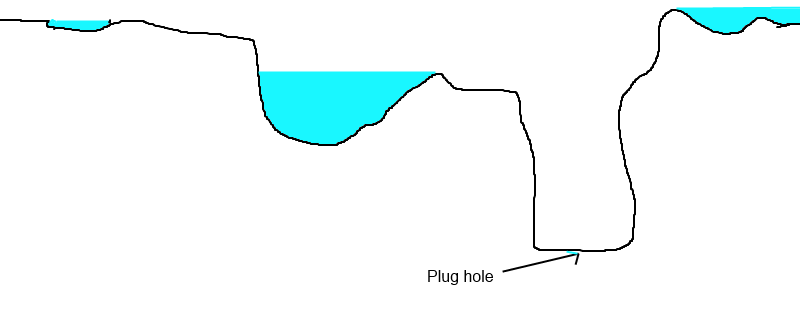Soldato
- Joined
- 20 Feb 2010
- Posts
- 4,503
- Location
- Darkest Worcestershire
Where will the fish go?
Yes.
Also, Australia used to be part of Antarctica and is still moving north, so it will eventually crash into South East Asia.
First you need to define where you are placing the plug hole, as that determines the amount of water that will be drained.
Depending on the depth of the plug hole, there will be a different amount of undrained water.

Once the position of the plug hole is determined, you could then start to calculate the pressure as a function of water height above the plug hole, and the amount of water linked by water tension as a function of time.
Pretty darn complicated tbh
Its average depth is 4,028~4,188 metres (14,000 ft or 2,333 fathoms)
 In which case...
In which case...The lowest known point on Earth—the Mariana Trench—lies 10,911 metres (35,797 ft or 5,966 fathoms) below sea level.
OK, according to Wiki...
So let's say the plug hole is right on that average depth.
EDIT: Actually, a true plug hole would be at the very bottom - or what's the pointIn which case...
If its going to take a few billion years 15 or 60 or whatever, whats the rate of evaporation, I mean would the oceans actually drain at all?
Why did Kamikazee pilots wear helmets?
To protect them on route to target. They're even more useless if they get knocked out mid flight.
To protect them from what though? They only wore bump caps, designed to stop them banging their noggin and doing damage when entering or exiting the plane.
Not gonna save them if they get shot down!

Why do we drive on the left in the UK?

I've always wondered if it was possible to die from fart inhalation.
Why do we drive on the left in the UK?
So....a plane and a treadmill....
If I had a space capable Audi A4, travelling at the motorway speed limit of 70mph, how long would it take to reach Proxima Centauri at a distance of 4.24 light years ?
If I had a space capable Audi A4, travelling at the motorway speed limit of 70mph, how long would it take to reach Proxima Centauri at a distance of 4.24 light years ?


